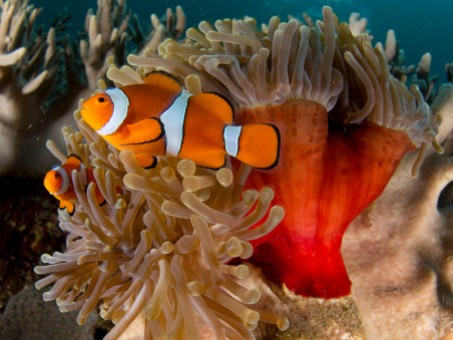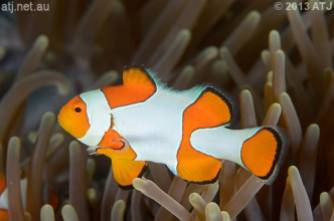Common Name: Percula Clownfish
Scientific Name: Amphiprion percula (Lacepède, 1802)
Distribution: New Guinea, Solomon Islands, Queensland
Type Locality: Port Praslin, New Britain Island, Bismarck Archipelago
Identification: Modally 9-10 dorsal fin spines; dorsal fin proportionally shorter, height 3.0-3.4 in head length. Stripes often outlined thickly in black, sometimes dramatically so.
Similar: Nearly identical to populations of A. ocellaris and A. cf ocellaris, differing more in genetics than appearance. The dorsal fin character is fairly reliable, but perhaps less-so in areas where the two populations overlap in Eastern Indonesia.
Notes: Compared to its relatives further west, A. percula is notable for producing highly melanistic specimens. The area between the anterior and middle stripes often turns solidly black in large females. It has been suggested that this is caused by Stichodactyla anemones being used as a host, but this is only partly true, as the normal phenotype can often be found hosting in this species. Conversely, melanistic specimens seem to never occur in Heteractis magnifica, suggesting some influence from the host anemone in this trait.
Specimens from West Papua, Halmahera and Northern Sulawesi are challenging to reliably identify, as they could conceivably belong to either species or be hybrids of the two. In the population genetic study of Timm et al 2008, specimens from this region were most closely related to populations further east at Biak and New Britain than to those from elsewhere in Sulawesi and Borneo, suggesting that there may be a cryptic species present. Far more study is needed to elucidate the evolutionary history of this group, but it is likely that the main genetic divides correlate to the patterns seen elsewhere in Amphiprion.



































